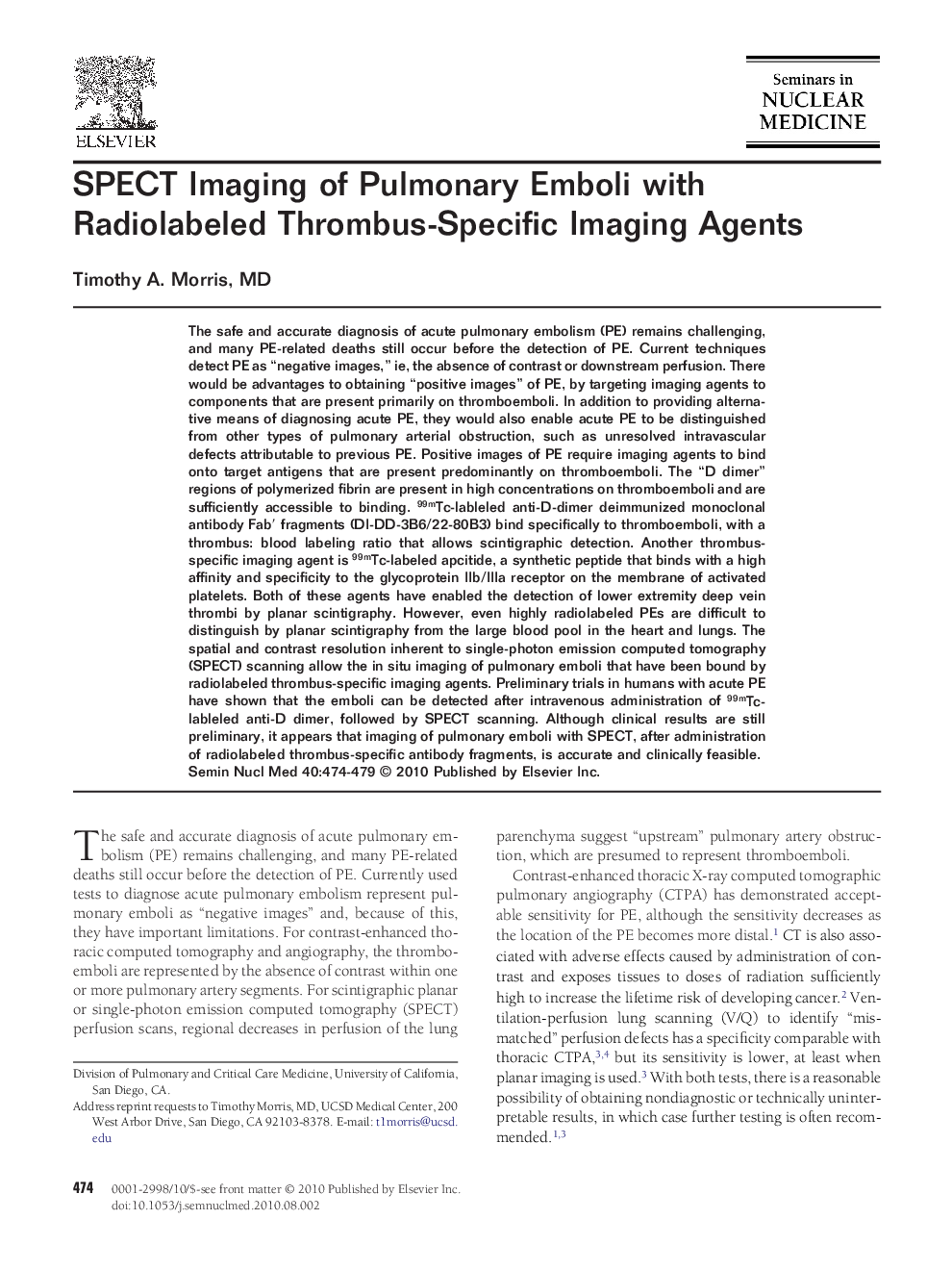| Article ID | Journal | Published Year | Pages | File Type |
|---|---|---|---|---|
| 4251130 | Seminars in Nuclear Medicine | 2010 | 6 Pages |
The safe and accurate diagnosis of acute pulmonary embolism (PE) remains challenging, and many PE-related deaths still occur before the detection of PE. Current techniques detect PE as “negative images,” ie, the absence of contrast or downstream perfusion. There would be advantages to obtaining “positive images” of PE, by targeting imaging agents to components that are present primarily on thromboemboli. In addition to providing alternative means of diagnosing acute PE, they would also enable acute PE to be distinguished from other types of pulmonary arterial obstruction, such as unresolved intravascular defects attributable to previous PE. Positive images of PE require imaging agents to bind onto target antigens that are present predominantly on thromboemboli. The “D dimer” regions of polymerized fibrin are present in high concentrations on thromboemboli and are sufficiently accessible to binding. 99mTc-lableled anti-D-dimer deimmunized monoclonal antibody Fab′ fragments (DI-DD-3B6/22-80B3) bind specifically to thromboemboli, with a thrombus: blood labeling ratio that allows scintigraphic detection. Another thrombus-specific imaging agent is 99mTc-labeled apcitide, a synthetic peptide that binds with a high affinity and specificity to the glycoprotein IIb/IIIa receptor on the membrane of activated platelets. Both of these agents have enabled the detection of lower extremity deep vein thrombi by planar scintigraphy. However, even highly radiolabeled PEs are difficult to distinguish by planar scintigraphy from the large blood pool in the heart and lungs. The spatial and contrast resolution inherent to single-photon emission computed tomography (SPECT) scanning allow the in situ imaging of pulmonary emboli that have been bound by radiolabeled thrombus-specific imaging agents. Preliminary trials in humans with acute PE have shown that the emboli can be detected after intravenous administration of 99mTc-lableled anti-D dimer, followed by SPECT scanning. Although clinical results are still preliminary, it appears that imaging of pulmonary emboli with SPECT, after administration of radiolabeled thrombus-specific antibody fragments, is accurate and clinically feasible.
